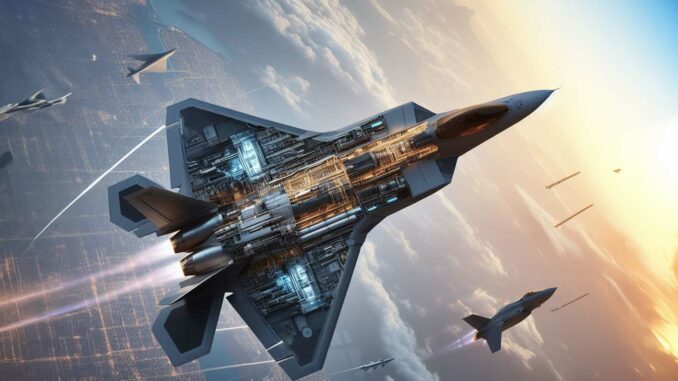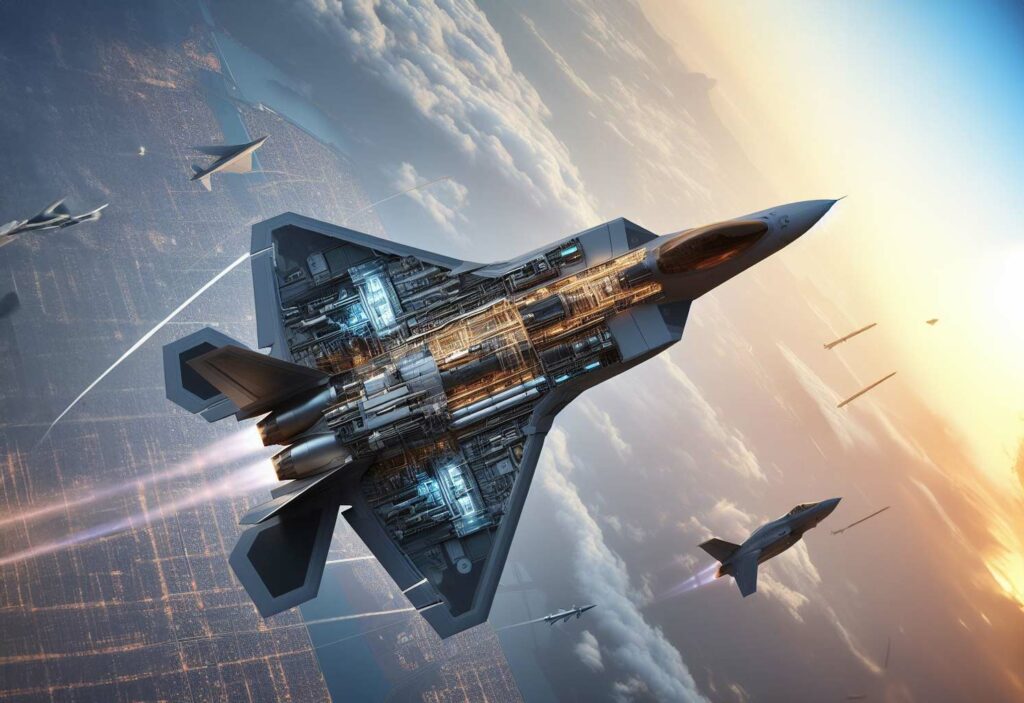
Secretary of the Air Force Frank Kendall has revealed details of a highly classified project and related Collaborative Air Combat program, marking an important milestone in the development of advanced technologies for the New Generation Air Dominance (NGAD) program. This revelation highlights the US Air Force’s innovative approach to maintaining air supremacy through a combination of manned and unmanned aircraft.
Introduction to the secret X-Plane program
Air Force Secretary Frank Kendall recently revealed details of a secret X-Plane program, which played a crucial role in the development of the US Air Force’s New Generation Air Dominance (NGAD) program. This highly classified project represents a significant leap forward in the search for cutting-edge technologies for air supremacy.
Genesis and objectives of the NGAD program
The NGAD program was launched following a 2014 study commissioned by DARPA, recommending that the successor to the F-22 Raptor be accompanied by a “family of systems”. The program, launched in 2015, was funded to the tune of around $1 billion, split equally between the Air Force, Navy and DARPA. It has resulted in the creation of several prototypes demonstrating the technologies needed for the next generation of air supremacy.
The technological scope of the prototypes
It’s unclear whether the prototypes mentioned by Kendall are the same as the large-scale flight demonstrator mooted in 2020 by the Assistant Secretary of the Air Force for Acquisition, Technology and Logistics, or whether they explored new advanced technologies. The latter seems most likely, with Kendall adding that NGAD is currently structured as “the combination of aircraft – a manned aircraft [and] unmanned aircraft – that will have some of the technical characteristics that we’ve demonstrated can be achieved.”

The Collaborative Air Combat (CAC) program
New details have also been revealed on the CCA program, which will not begin until the FY2024 defense bill is passed. Unmanned CCAs will be controlled by NGAD aircraft, enabling manned and unmanned platforms to fight in formation. This program will benefit from all past and current work on autonomy and unmanned aircraft.
Funding and planning for the CCA program
The CCA program, which is expected to receive $5.8 billion in funding over the next five years, is considered by Kendall to be one of the most important programs about to begin. Without further delays, production of a first batch of CCAs could begin around 2028.
Planned acquisition of NGAD and CCA aircraft
The U.S. Air Force plans to acquire 200 NGAD fighters and 1,000 CCAs, which will cooperate in the “loyal wingman” role with the sixth-generation fighters. While each NGAD aircraft is expected to cost hundreds of millions of dollars, the CCAs are designed to cost “in the order of a quarter to a third” of the current unit cost of an F-35.
Balancing requirements for the CCA program
The Air Force is currently defining the right balance in terms of requirements for the CCA program, such as range and payload characteristics that must be consistent with the operational concept of UAVs flying ahead of or accompanying manned fighters during their missions. One aspect that is already clear is that CCAs will be modular, with some carrying weapons and others carrying other systems.
Implications and future prospects
The revelation of these secret programs and the technological advances they involve marks a turning point in the way the US Air Force envisages air supremacy. By combining manned and unmanned aircraft with cutting-edge technologies, the NGAD and CCA represent an innovative and flexible approach to maintaining America’s air advantage in future conflicts.
The secret X-Plane program and the CCA program represent important milestones in the development of advanced air capabilities for the U.S. Air Force. These programs underscore the United States’ ongoing commitment to remain at the forefront of military air technology, adopting innovative approaches that integrate manned and unmanned aircraft. This strategy, aimed at ensuring next-generation air dominance, could redefine military air operations and confirm the United States’ status as a world leader in military aviation.